Syncronae traits
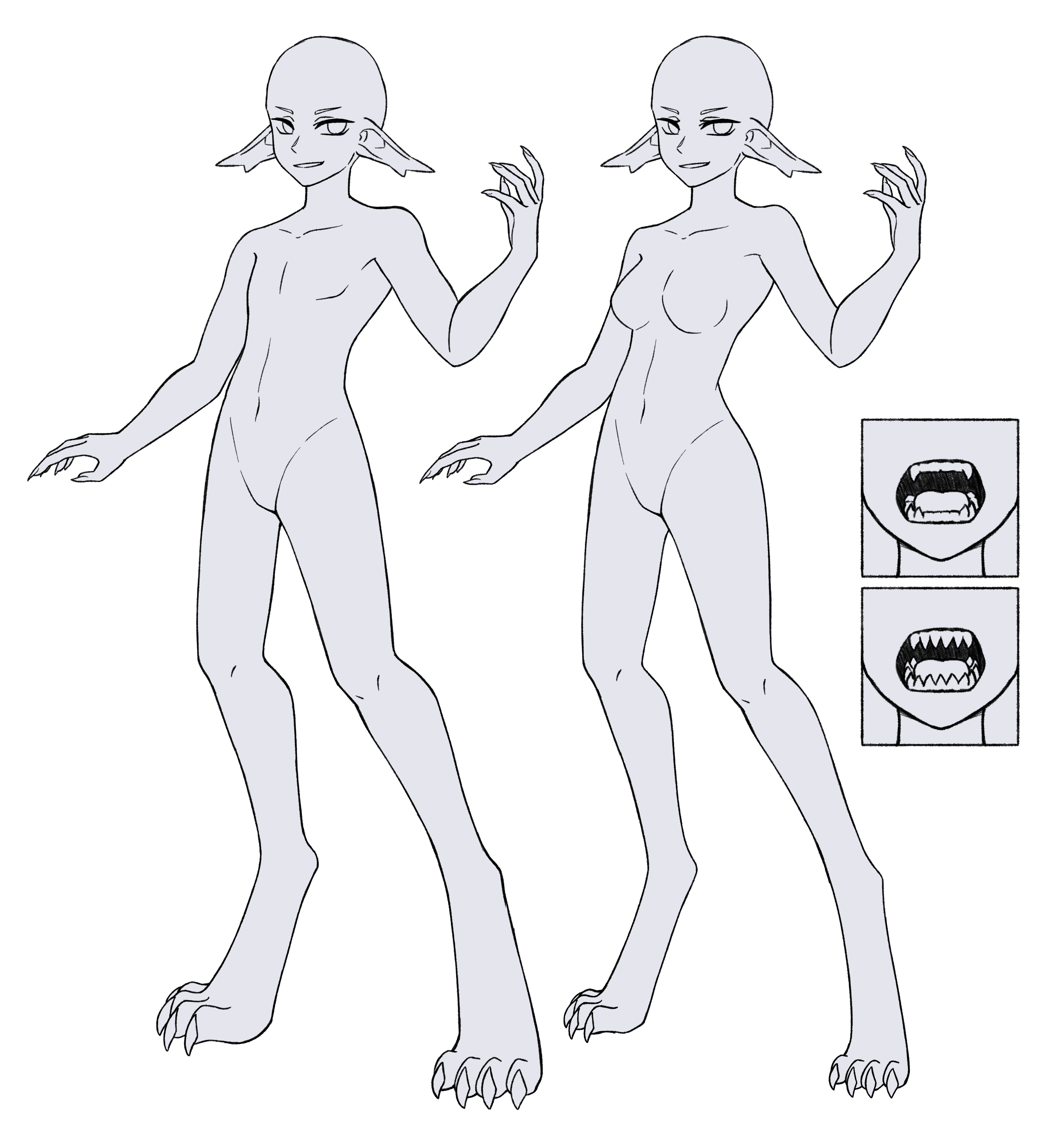
Syncronaes have humanoid hairless bodies, with few physical differences between males and females. Females have breasts, a thinner waist, wider hips, less shoulders spacing and smaller paws. But it's possible to be born males with a more feminine appearance and females with a male appearance and vice versa, as well as it is possible to be born an intersex Synchronae.
The basic traits of Syncronaes are:
- Orelhas longas e pontudas, com uma bifurcação na ponta.
- Long and pointed ears with a fork at the tip.
- Teeth with two pairs of canines in the lower jaw (optional).
- Paws with 4 toes, which resemble a mixture of canine and reptilian paws.
- Pointed nails and claws: Fingernails can be clipped and have light natural colors, and toenails can be filed and have animal natural colors. Both can be painted over with nail polishes and the like.
Rarities
Syncronaes have three basic rarities, they are "Common", "Rare" and "Epic". Their main differences are where their sensors originate, how much they can transform their bodies in synchronizations and the traits available.
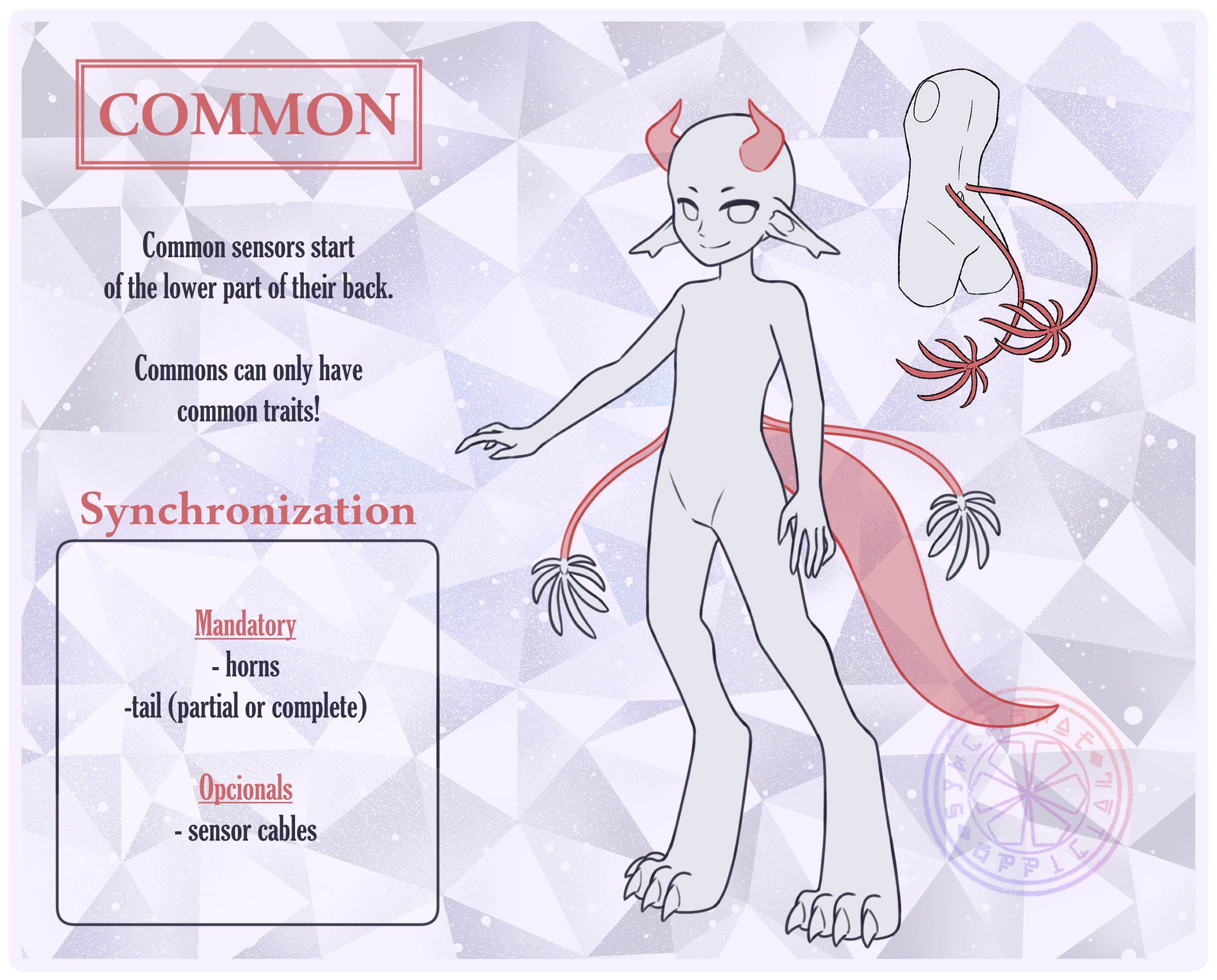
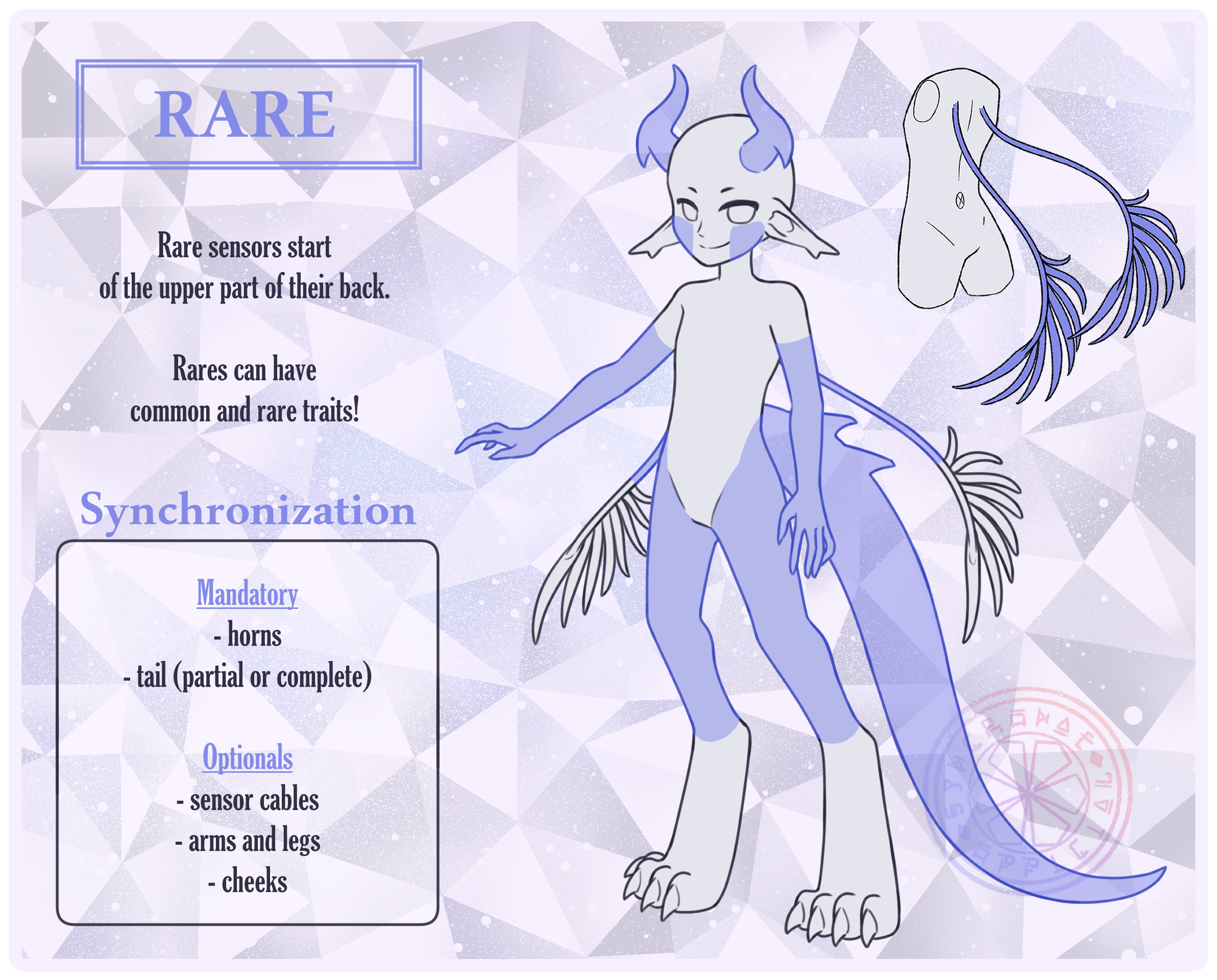

Grupos
Every Syncronae, regardless of their rarity, borns destined for 1 of the five elemental worlds. The shape of the horns, the fantasy skin color palette and the table of synchronizable things will vary depending on which world he has an affinity for.
Check out the 5 available groups below!

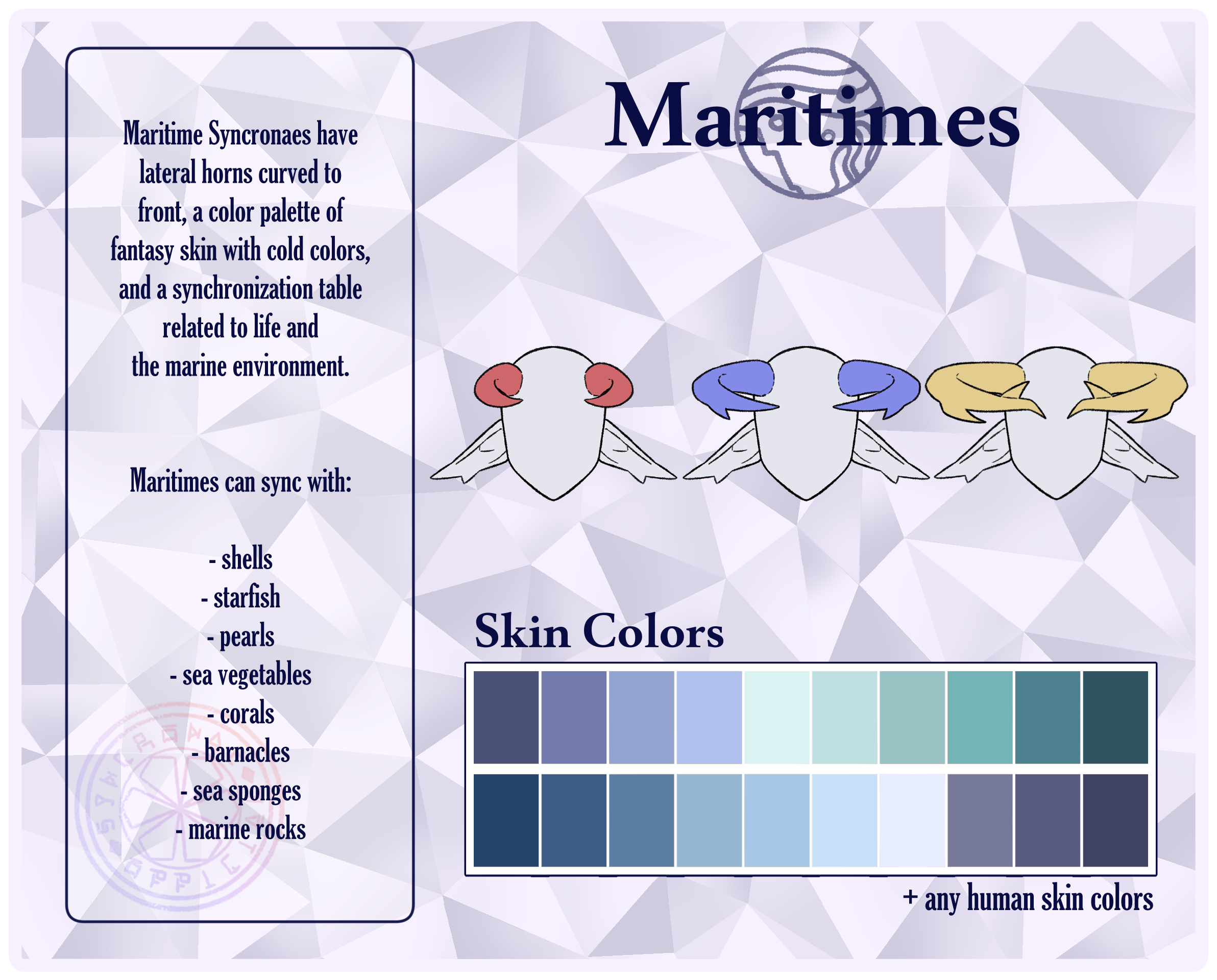
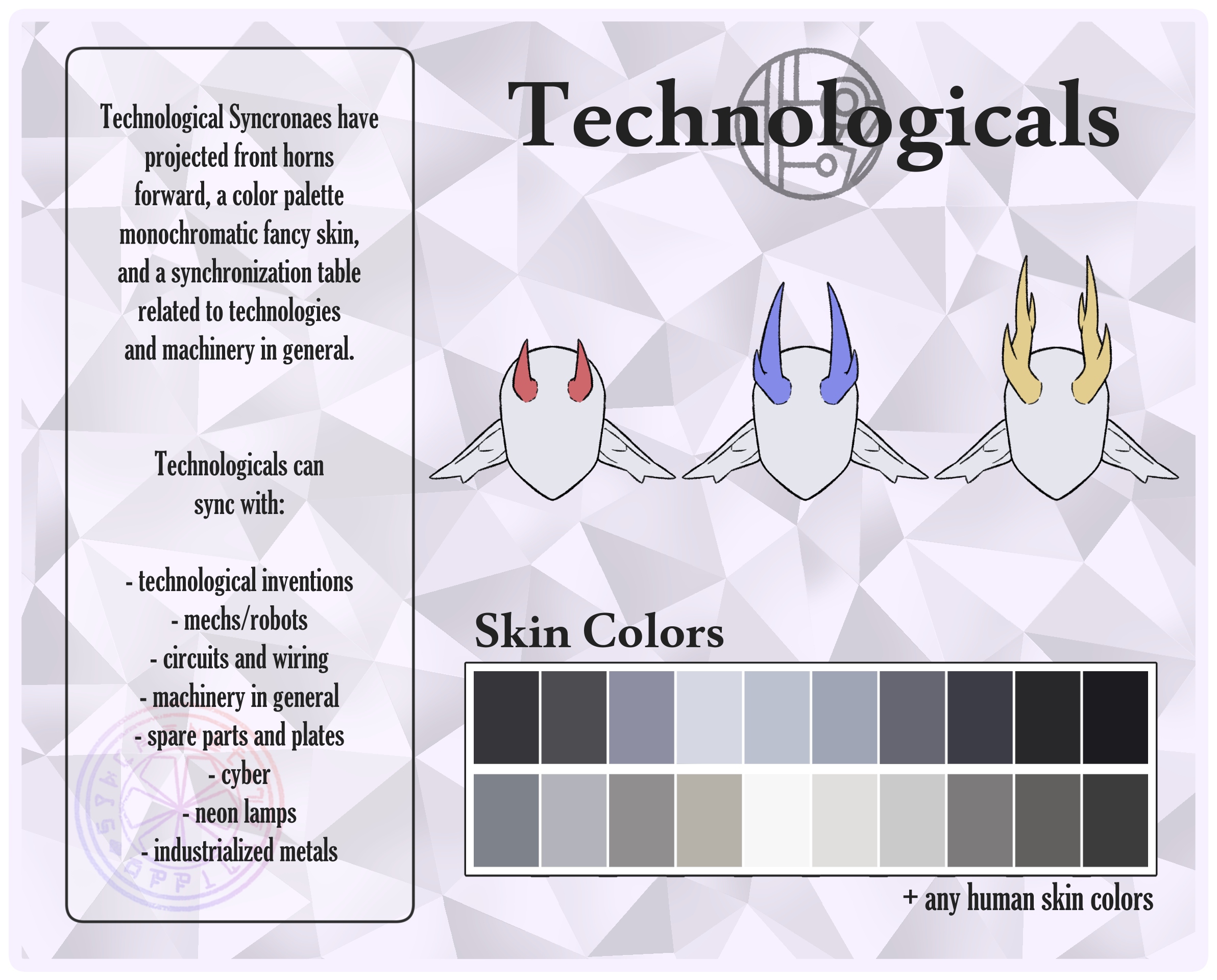

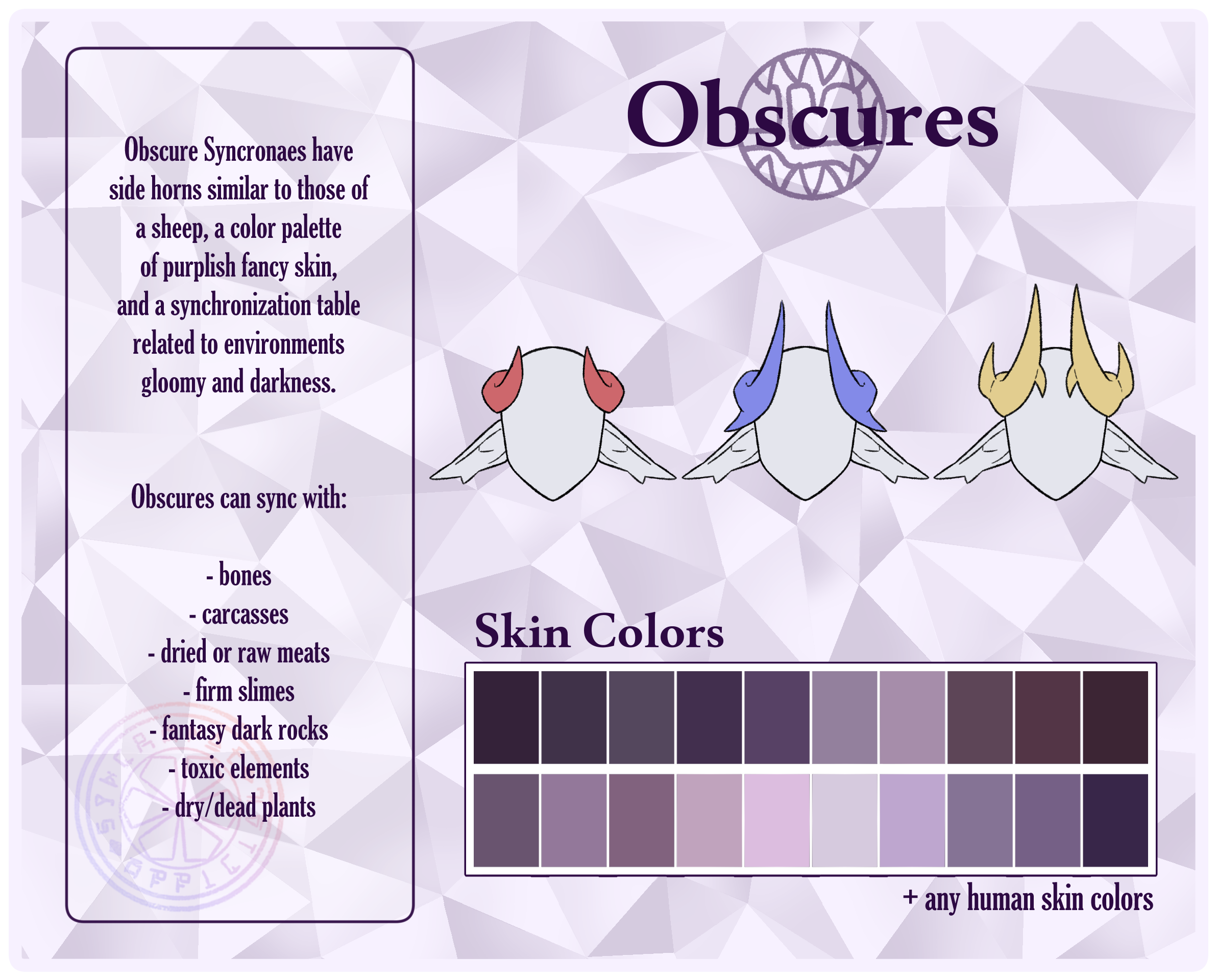
Traits
Horns
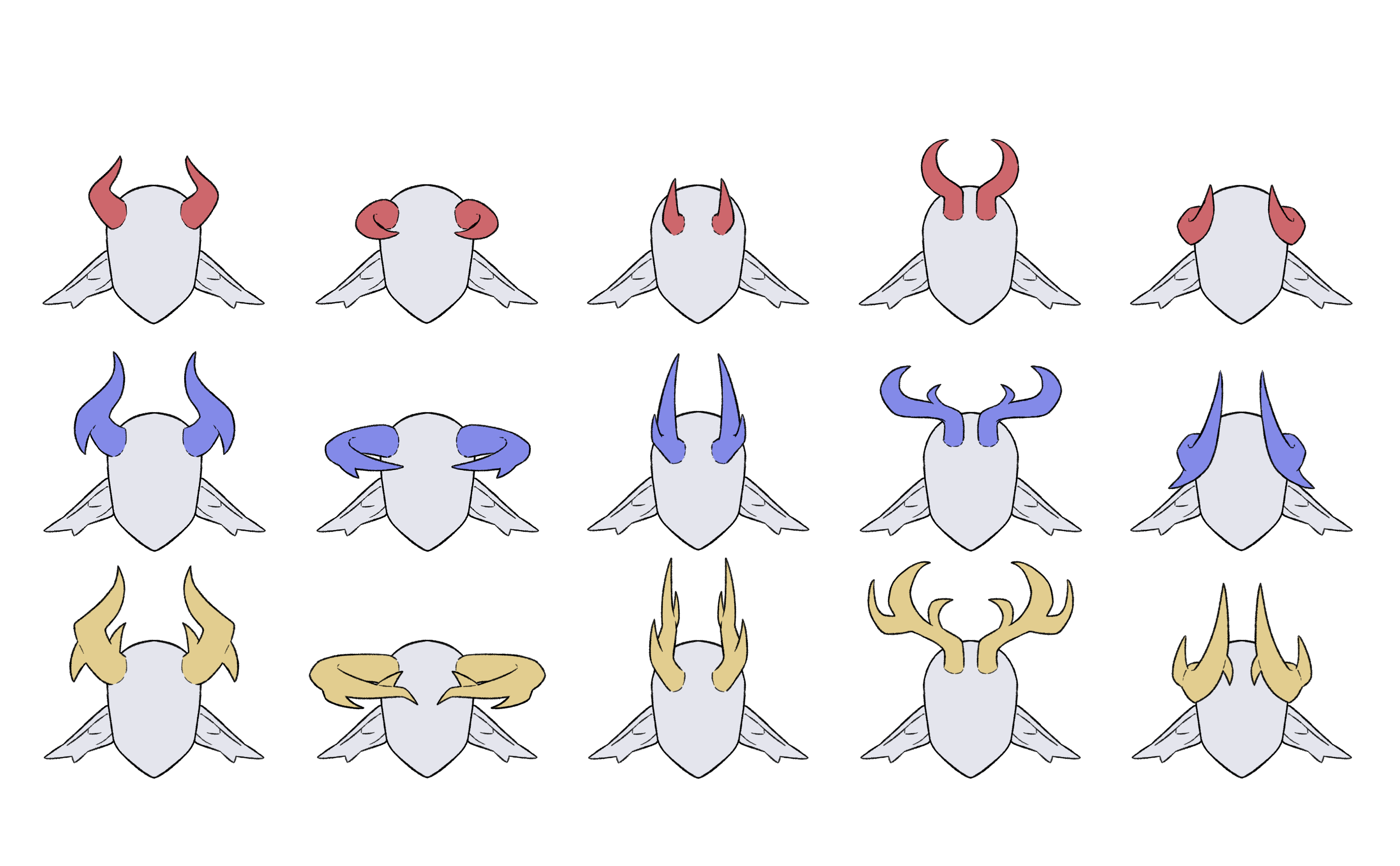
The shape of a Syncronae's horns will also point what types of elements they can synchronize with.
Common: they have smaller sizes and simpler shapes.
Rare: they are larger than common shapes and generally have two ends.
Epic: they are larger than rare formats and generally have three points.
*Higher rarities can use the shapes of the lower rarities!
Sensors

The sensors need to be at least thigh height, and at most foot height (in both rarities)!
Common 1: Its tips have a symmetrical shape with 7 branches.
Common 2: they have a branch of 3 that resemble a "petal" shape at the tip, with numerous thin and soft tips that resemble hairs coming out of the central part.
Common 3: It has a shape that resembles leaves at the tip, with a large and long "sting" coming out of its tip.
Rare 1: Its ends are thin and long, and it has 7 branches that project at the end of the cables, all to the same side.
Rare 2: They have a shape that resembles a butterfly's "half-wing", they are soft and malleable.
Rare 3: They have two small "balls" with a tip shaped like a leaf.
Epic 1: They have several soft, malleable tips that together resemble hair, with two small receptors at each tip.
*Higher rarities can use the sensors of lower rarities!
Tail

Common: they are simple and cylindrical. They reach more or less to the heel when stretched straight down.
Comum 2: They are smaller and chubbier, with a shape that resembles a reptile tail with rounded spines on the underside.
Comum 3: They are thin and have an adornment with two points at the end of the tail.
Rare 1: they are cylindrical with two thorns on top. They are long enough to drag on the ground.
Raro 2: They are thin and long, with a curled tip. They have two spines of different sizes near the tip.
Raro 3: They are cylindrical and long, with a large adornment of 5 scales at the tip. They also have two spines near the tip.
Epic 1: they are cylindrical with fur on the top and tip. They are long enough to drag on the ground.
*Higher rarities can use the the tail of lower rarities!
Eyes

Common: white sclerae; iris of only one color; round or slit-shaped black pupils.
Rare: white sclerae; iris of up to 2 colors; heterochromia; white pupils, circular pupils and no pupil.
Epic: white sclerae; iris of up to 2 colors; heterochromia; white slit-shaped pupils, circular white pupils and circular, slit-shaped colored pupils.
*Higher rarities can use the traits of lower rarities!
Skin Colors
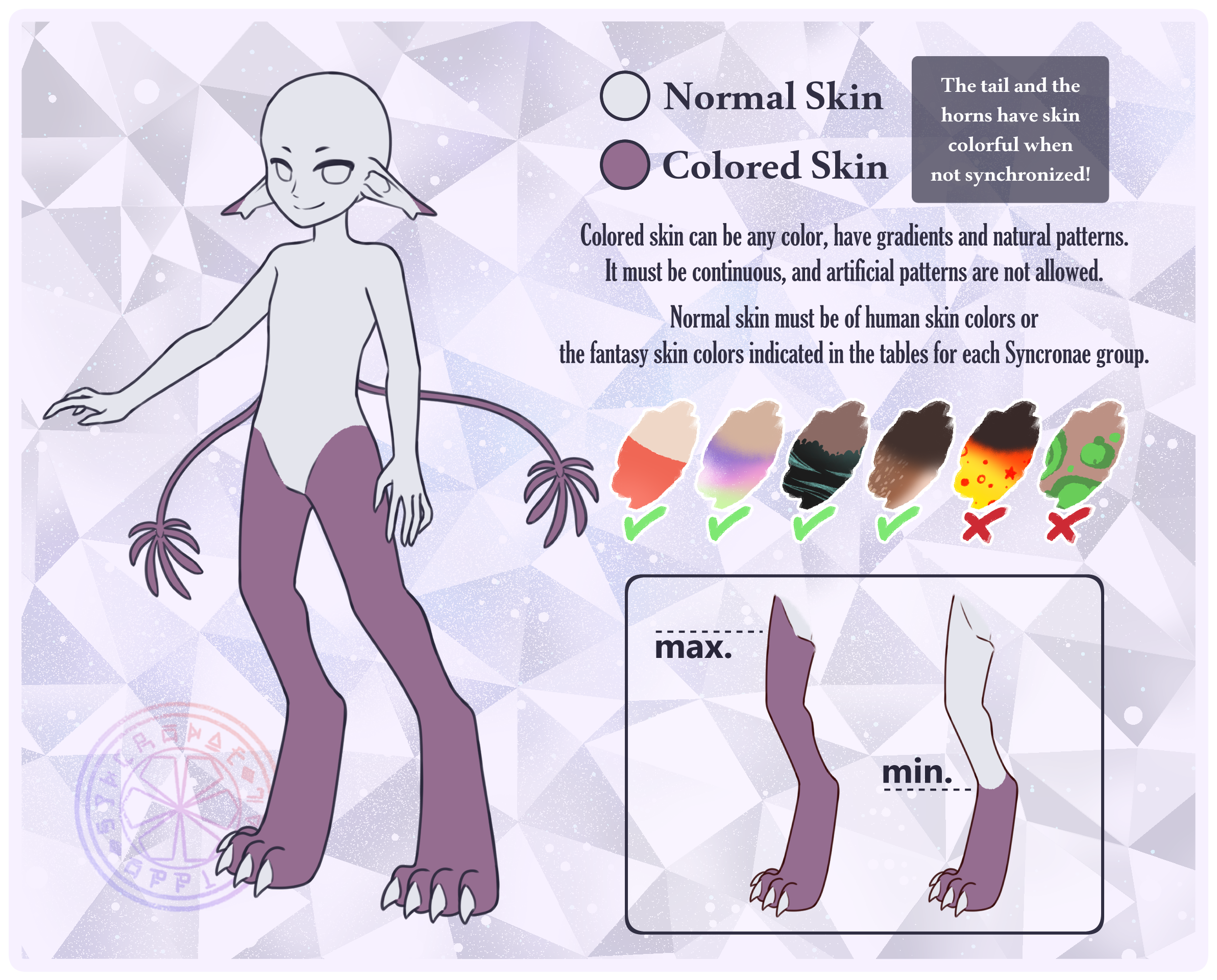
Other details!
Syncronae may have freckles, moles, vitiligo and birthmarks, but they must all be in natural tones.
Body paintings that simulate brands are only accepted outside of the character reference that will be sent for approval and will be registered in the Masterlist.
Tattoos are generally allowed, but it must be clear that they are tattoos and not body marks.
Synchronization
Synchronization can be a little complicated to understand at first, and that's why we've prepared a small guide with the main rules and some examples.
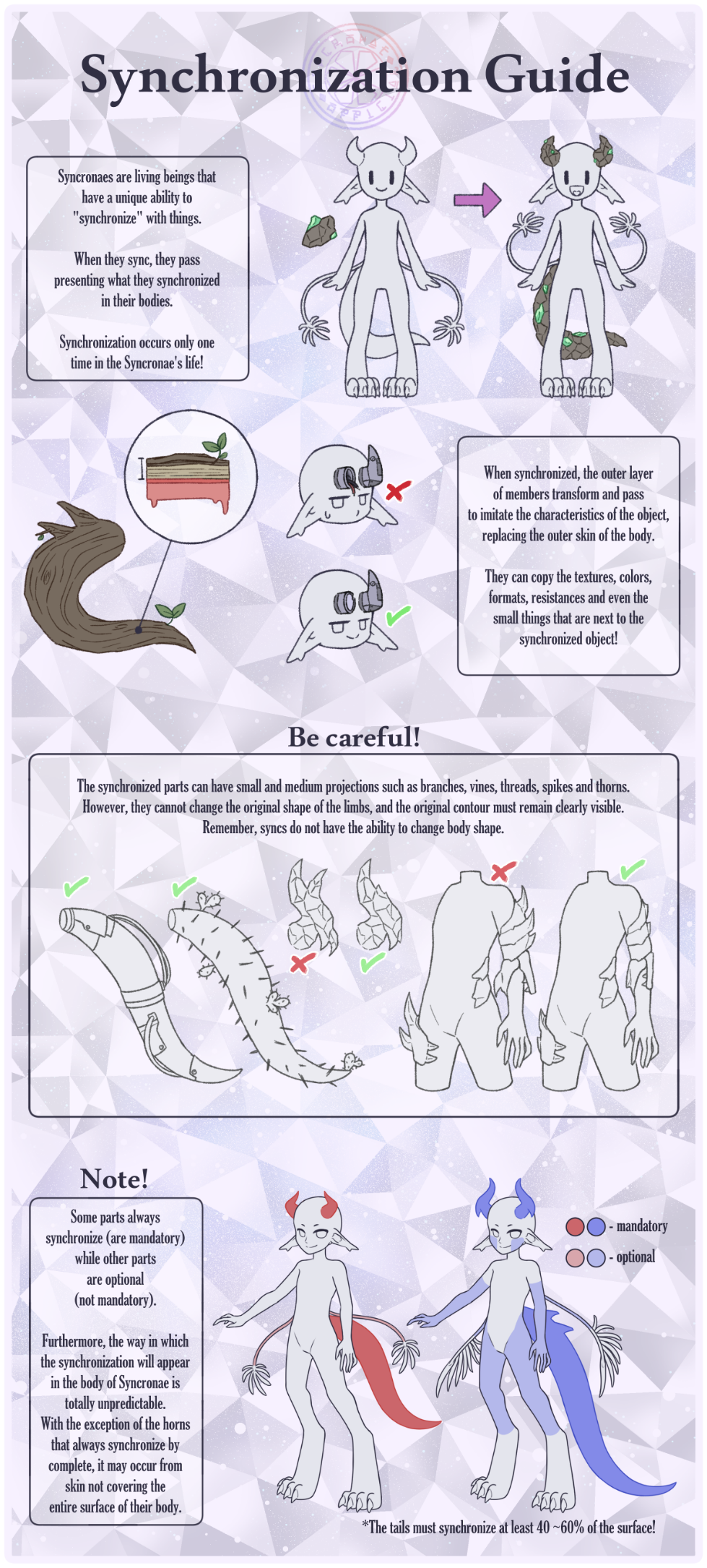
Other synchronization rules
- They need to be: 1) characteristic of the chosen world; 2) solid elements, agglomerates of solid or firm gelatinous elements that maintain their shape (with the exception of ice); 3) inanimate or sessile (creatures that do not move, such as plants and anemones); 4) can be found in nature (except in the Techno world, as the “nature” there is technology itself).
- If an element belongs to the table of one of the groups, it cannot be used in another group even if it obeys the rules mentioned above (e.g. precious stones can be found in the ocean, but the Syncronae of the maritime group will not be able to synchronize with them , as "precious stones" are present in the Vulcan table).
- The synchronized "thing" does not necessarily need to be just 1 element. In this sense, an entire set can be synchronized if Syncronae has come into contact with them at the same time (e.g. trunk with mosses and vines, bushes with leaves and flowers, land with bones and buried rocks, rocks with barnacles and starfish ).
*If a viable element is not in the table, please ask the administration to find out which world it might belong to!
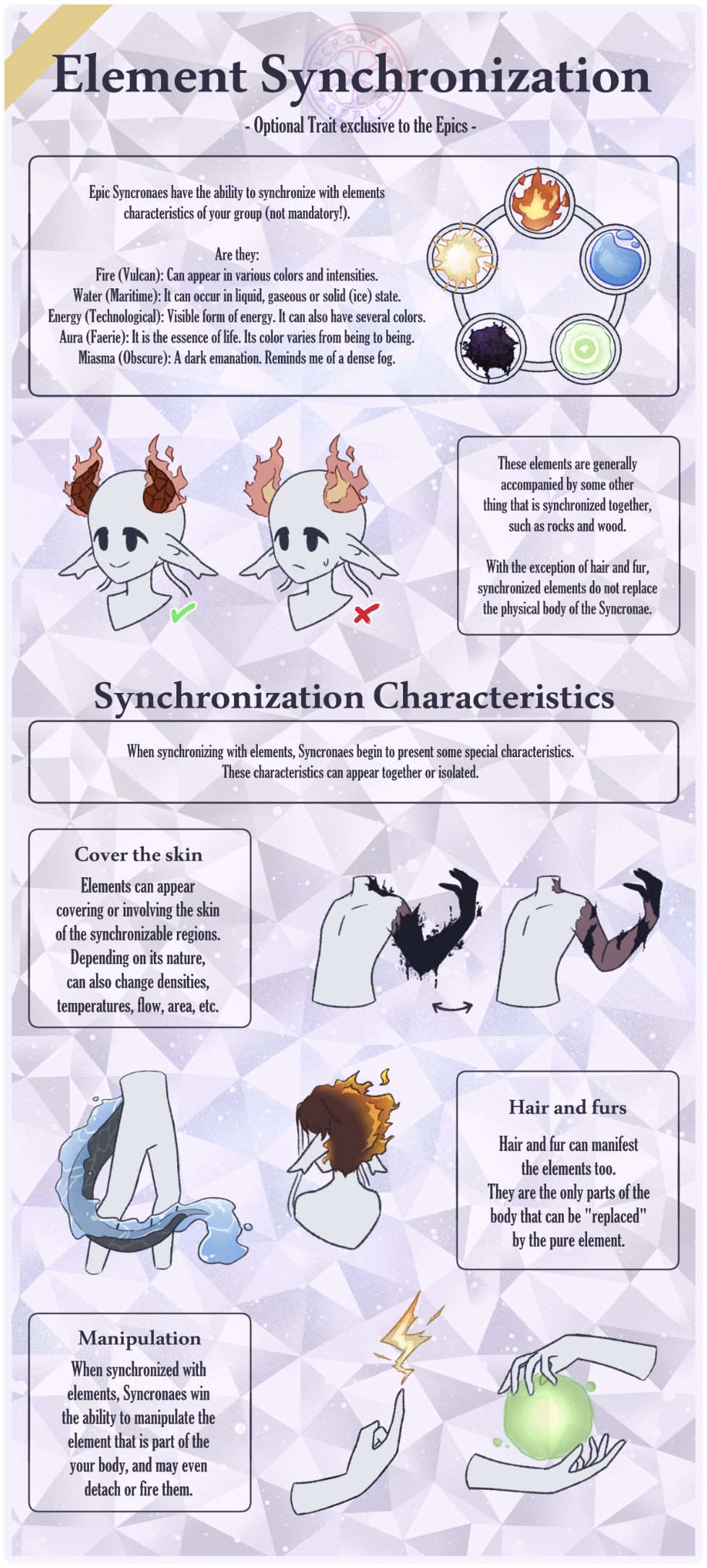
Corrupted Syncronaes
Corrupted Syncronaes are Syncronaes who have received a "divine curse" for refusing to synchronize in their proper times, either on purpose or accidentally. Their features such as horns, sensors, tail shapes and even their skin are altered due to the curse.
Because they have unstable bodies, synchronized elements appear completely randomly on the surface of their skin. The tail is the only place where the element always appears in some intensity!
Horns
The shape of a corrupted Syncronae's horns are also separated by synchronization affinity.
They have twisted shapes and different sizes (the largest and smallest sides can be reversed!).
Horns can have extra tips that start anywhere at the base.
In addition to the main horns, they can also have small, smaller horns (they must always be close to the main horns).
*All rarities can use these traits!
Sensors
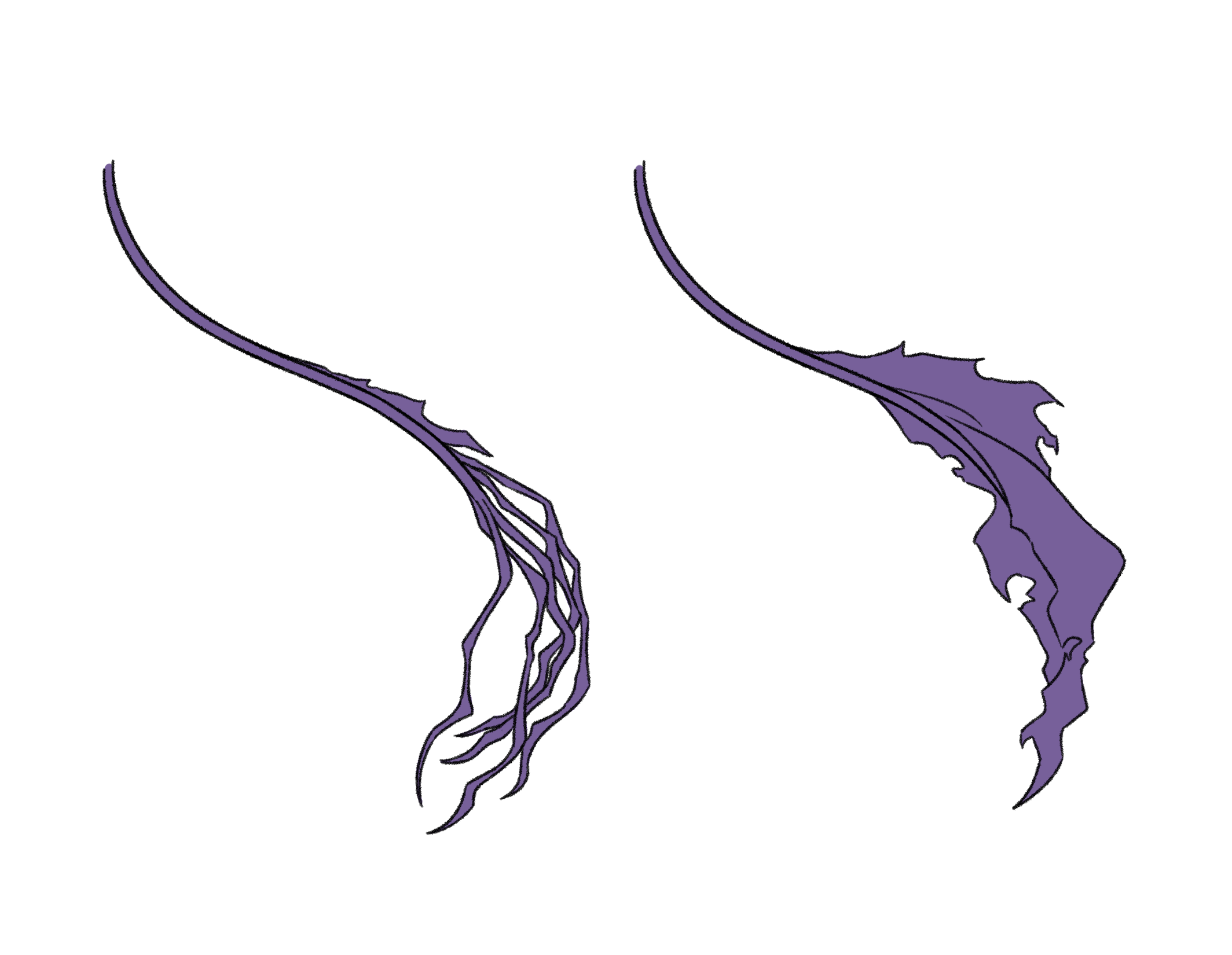
The sensors must be at least thigh high and at most toe height (in all rarities)!
Its cables are always thin and cylindrical, but the shape of their ends varies.
Type 1: has a shape that resembles worn fabric. It may have holes and tears.
Type 2: has 5 twisted "straps" that come from the end of the cables.
*All rarities can use these traits!
Tail
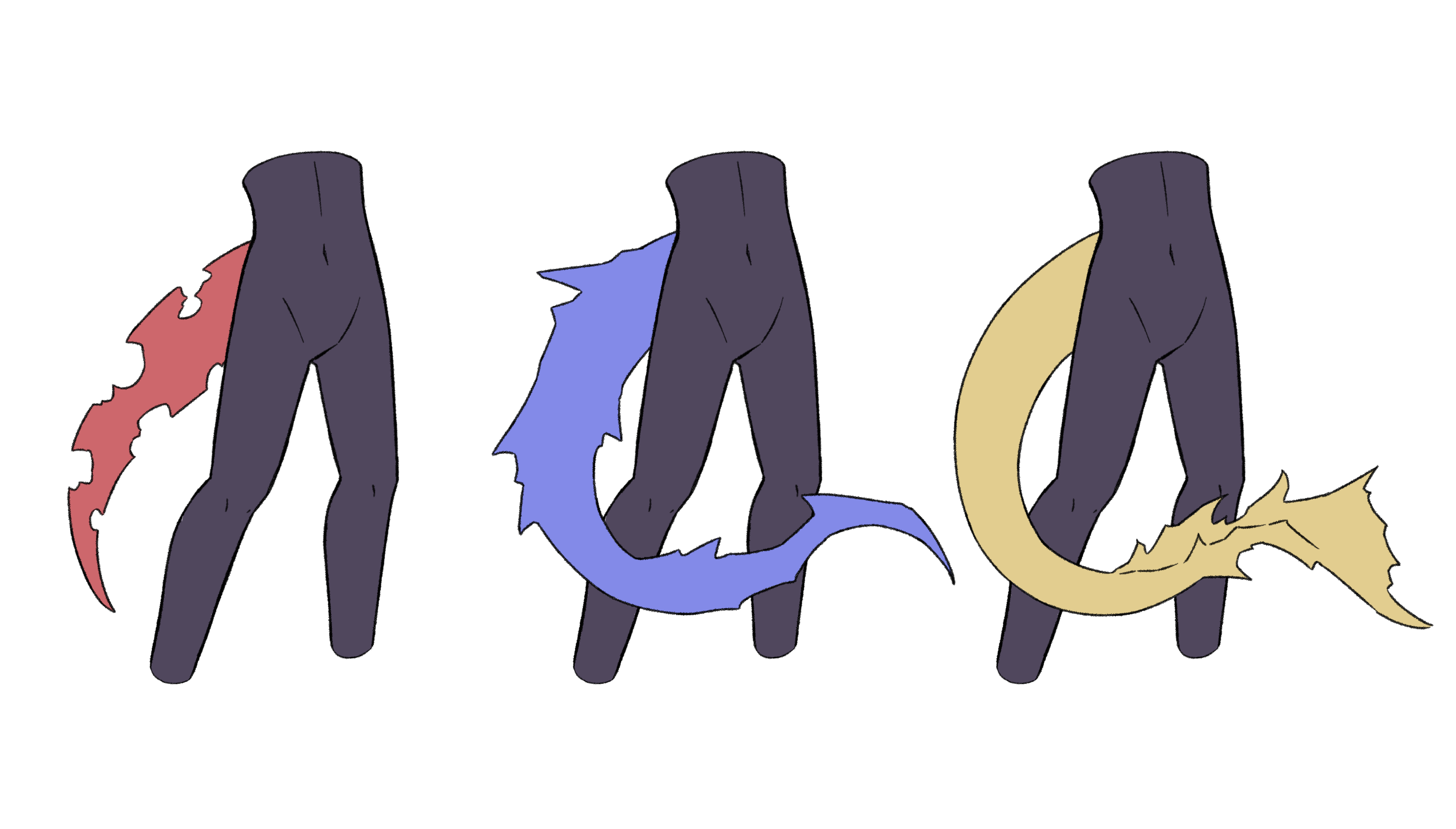
Common: they are cylindrical, with random "holes" of various sizes. They reach more or less to the heel when stretched downwards.
Rare: they are cylindrical and long, with a twisted shape with random ends. They are long enough to drag on the ground.
Epic: they are cylindrical and long, with a thorny part at the tip. They are long enough to drag on the ground.
*Higher rarities may be shaped like the tail of lesser rarities!
Eyes

Corrupted Syncronaes have 2 unique eye shapes, with black sclera (or dark, resembling black).
Type 1: dark sclerae; slit-shaped iris; one color; may have heterochromia.
Type 2: dark sclerae; double-shaped iris; up to two colors; may have heterochromia.
*All rarities can use these traits!
Corruptios

Corrupted Syncronaes express their corruptions clearly on their skin, which may or may not affect the body's movements and senses. There are 3 distinct types of bodily corruption:
Type 1: The synchronized element appears to "jump" grotesquely under the skin.
Type 2: The synchronized element distorts the body, making it much larger than normal. This distortion occurs only in the limbs (arms and legs).
Type 3: The synchronized element fuses with the skin in an unstable manner, making the affected part fragile. The surface skin breaks down and peels over time.
*All rarities can use these traits!